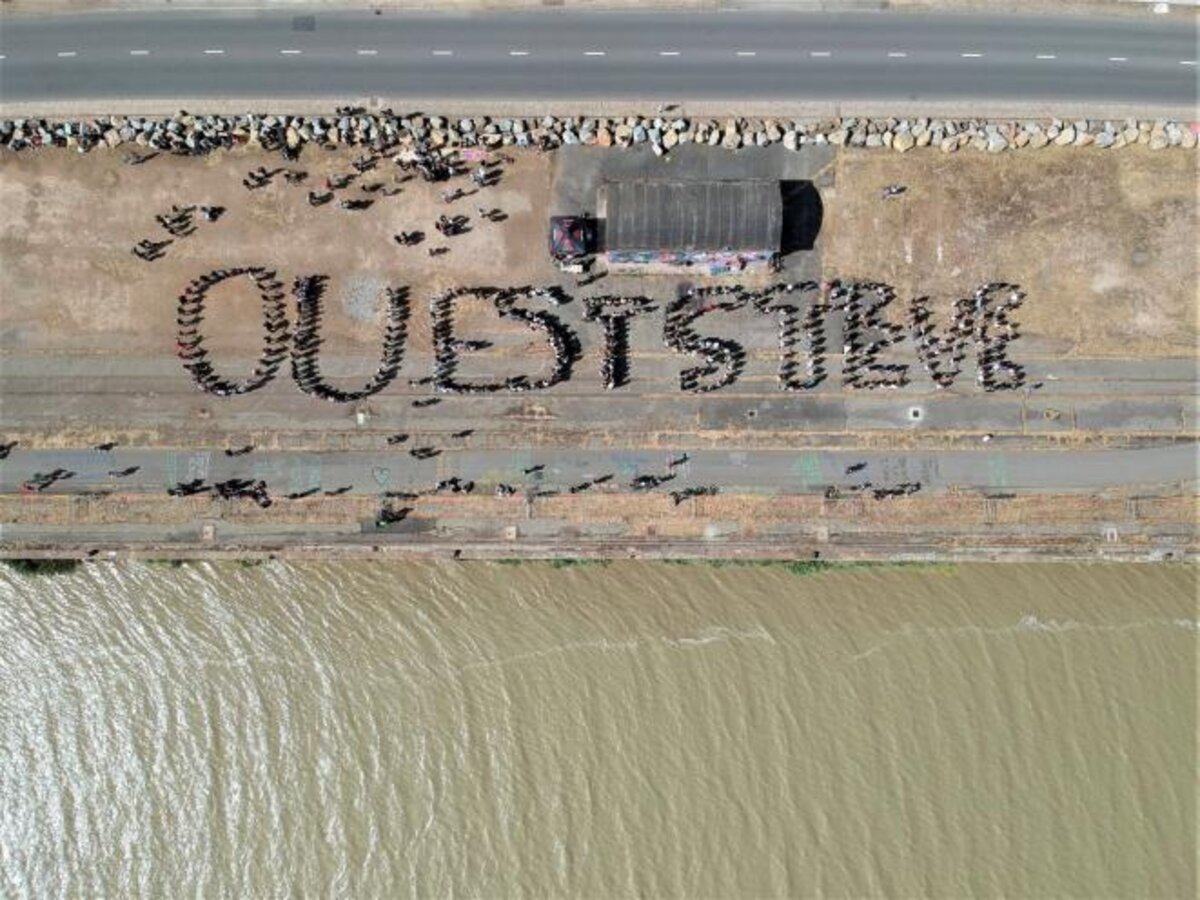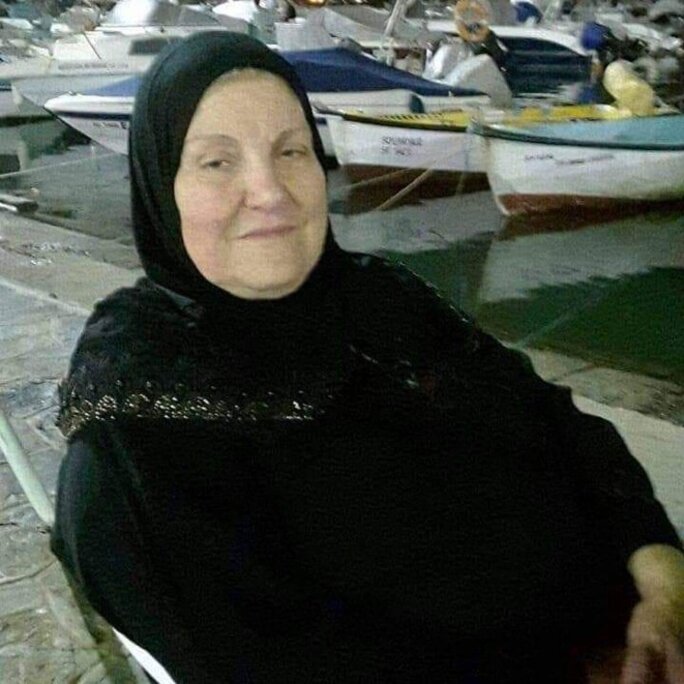There was no happenstance, accident, or unusual set of circumstances behind the death of Zineb Redouane or the disappearance of Steve Caniço. The two tragic cases, occurring within the space of just a few months, are part of the grim toll of the law and order policies put in place by France’s executive and its interior minister Christophe Castaner.

Enlargement : Illustration 1

A month has now passed and no-one knows where Steve is, after the 24-year-old disappeared on the night of June 21st. He was among a group of people taking part in the annual ‘Fête de la musique’ street parties held across France on the evening of the summer solstice, and who had set up a sound system on a quayside along the river Loire in Nantes, north-west France. After defying a police order to disperse in the early hours of the morning, the group became involved in violent clashes with officers who charged at them using tear gas, stun grenades and rubber pellet guns. Several people jumped or fell into the river. All except Steve Caniço were later accounted for.
Nobody can believe in a happy outcome in the search for the young man, because everyone has understood the probable result of the police madness that night, a madness that has been brewing over recent months.
The fate of Steve and Zineb followed two incomprehensible actions by police. Neither were wearing the high-viz yellow jackets of the “gilets jaunes” social protest movement which, during months of street demonstrations, was marked by violent clashes. These were two people who threatened no-one, nor anything. They were collateral victims of a strategy of terror.

Enlargement : Illustration 2

Last December, Zineb Redouane, 80, was closing the shutters of her apartment in Marseille during clashes in the street below between police and demonstrators – yellow vests and others protesting at slum rentals – when she was struck in the face by an exploding tear gas grenade. She died two days later during an emergency operation to treat her head injuries.
In both her case and that of Steve, the government and the police cannot offer their usual argument about the use of legitimate self-defence in face of violence. Nor can it be argued that the victims were unjustifiably present at a demonstration, which was in sum the reproach made by President Emmanuel Macron against Geneviève Legay, a 73-year-old who was seriously injured when she was knocked to the ground during a police charge against a ‘gilets jaunes’ street protest in Nice last March. For the French president, Legay, a militant with alter-globalization group Attac, should simply have stayed at home.
For the authorities in France, it seems, the police is never wrong, and police violence does not exist. Illustrating this was a ceremony led on June 16th by interior minister Castaner to present medals to police officers in honour of their services to “interior security”. Among those awarded the medal – which is officially “destined to reward particularly honourable services, notably an exceptional engagement” – was the officer who ordered the use of tear gas in Nantes against the group surrounding Steve Caniço, but even the commander of the anti-riot police unit who fired the teargas grenade that hit Zineb Redouane, and also the police officer who led the charge that left Geneviève Legay knocked to the ground with serious head wounds.
The circumstances of the events concerning Steve Caniço and Zineb Redouane, and their personal profiles, were apparently insufficient to prompt any words of compassion from the French president (commenting on the case of Steve Caniço at the weekend, he spoke simply of how he was “very preoccupied” by the affair), nor to move a minister to visit either of the grieving families, nor even any statement of regret over the events by an official spokesperson.

Enlargement : Illustration 3

In the same manner, there has for months been an official silence, and an implicit utter denial, about the statistics compiled by journalist David Dufresne of the wounds people sustained during the several months of ‘gilets jaunes’ demonstrations; he has recorded 24 cases of people who lost the use of an eye from rubber pellets fired at them by police, those of five others who lost a hand in grenade explosions, and 315 others who suffered head injuries (his analysis for Mediapart, in French, can be found here). While all of these wounded demonstrators and passers-by did not lose their lives, many have lost the sense and the taste for life.
There are deaths from police interventions recorded every year in France, including 15 in 2018 according to an annual report published last week by the national police force internal investigation branch, the IGPN. But concerning police law and order operations during public demonstrations and street marches, there has for years existed a clear doctrine that every precaution should be taken to avoid fatalities. That has been made obsolete in the space of just a few months.
Following the disappearance of Steve Caniço, interior minister Christophe Castaner announced the launching of an investigation into the events by the IGPN. But for months, the IGPN has opened numerous investigations much like others create commissions of inquiry, to all the better paper over problems.
The head of the IGPN, Brigitte Jullien, commenting on the violent incidents during the rolling ‘yellow vest’ protests, publicly stated that “I totally refute the term ‘police violence’”. She said that if, until now, no police officer has been suspended from duty over the injuries caused during the protests, it is “because no investigation has allowed for the conclusion of the responsibility, at an individual level, of a police officer”.
On that basis it was by chance that in Nantes on the night of June 21st around 30 tear gas grenades, about a dozen stun grenades and a similar number of rubber pellets were aimed at a group of young people who had decided to carry on dancing half an hour too long. It was bad luck, then, that 14 of them fell into the Loire river.
In a rare occurrence, one police union, the SGP-FO, commenting on the events that night, slammed what it called “a serious misjudgement, an outrageous order, firstly placing our colleagues in danger, and also the [public]”. Yet one month later, the senior officer in charge of the operation has not been suspended from duty, nor has any of his men who were involved, and no internal investigation has been launched by the public administration services, which has left the local prefect of the Pays de la Loire region safe and sound. It is as if this police madness cannot even be suspected, let alone denounced, and that there can be no questioning over the escalation in the use of the arsenal provided to the police.
Zineb Redouane died in hospital on December 3rd 2018. After more than six months of investigations, the police officer who fired the teargas grenade that caused her fatal injuries has still not been identified. The CRS anti-riot police group he belonged to, and which fired a total of about 200 tear gas grenades on the same day that Zineb Redouane was hit by one, have told an internal investigation that they cannot recall who launched the grenade at the old woman’s window. When shown CCTV images of the scene, they said the video quality was too poor to recognise the colleague responsible. Meanwhile, the captain of the CRS company involved refused to hand over the five teargas grenade launchers used that day for ballistic examination by the IGPN.
What has been the reaction of the justice authorities? The Marseille public prosecution services had first underlined Zineb Redouane’s previous poor health rather than centre on the trauma caused by the grenade; the day after she passed away, a statement was issued announcing that the “facial impact was not the cause of the death”. Meanwhile, it emerged that the city’s deputy public prosecutor, André Ribes, was in fact present in the street alongside the CRS when the grenade was launched at Zineb Redouane’s window, but did not alert either the appropriate police services or an investigating magistrate.
In the case of Geneviève Legay, the 73-year-old who suffered head injuries after being knocked to the ground during a ‘yellow vest’ demonstration in Nice, the chief public prosecutor of the Riviera city, Jean-Michel Prêtre, handed the investigation into the events to a police woman officer who is the personal partner of Rabah Souchi, the police commissaire in charge of the crowd control operations that day – and notably the charge by officers that caused her fall.
There are no longer any rules nor any limits, as illustrated again on June 28th in Paris when several dozen ecologist militants, men and women supporters of Extinction Rebellion, held a peaceful sit-in on the Sully bridge in protest at what they regard as insufficient measures to reduce climate change. They were violently evacuated by anti-riot police spraying cannisters of teargas at very close range, and to such a massive extent that even the officer in charge of the operation lost consciousness.
But why would any of those involved in such actions feel concerned when President Emmanuel Macron himself leads by example? Picking up the relay baton of his interior minister, Macron, speaking last March in south-east France at one of a series of regional public debates prompted by the ‘gilets jaunes’ unrest, told one of the movement’s sympathisers: “Don’t talk of ‘repression’, of ‘police violence’. These words are unacceptable in a constitutional state.”
So just what is unacceptable in a constitutional state?
Of course, such violence and dramatic events have been present in socially modest neighbourhoods for years. But while some media attempt to report and record these incidents, for most of the time the abuse and brutality has taken place largely out of sight.
For several months now, thanks to the surfacing of numerous video recordings, injustices are being revealed for all to see: one must be blindfolded to not have noticed the scenes of demonstrators hit in the head by projectiles while they had their backs turned, or with their hands in the air, or others subject without reason to baton charges and physical assault.
When public prosecutors, ministers and even the French president lend support to the totality of police abuse, when causing the death of an elderly person becomes legitimized violence, when the highest authorities decide to continue to arm the police with maiming LBD rubber pellet guns despite condemnation of their use by the United Nations, and when, it must be said, all of this happens without prompting any significant wave of protest, then tragic events become inevitable, and the cases of Zineb Redouane and Steve Caniço may well be just the first.
-------------------------
- The French version of this opinion article can be found here.


